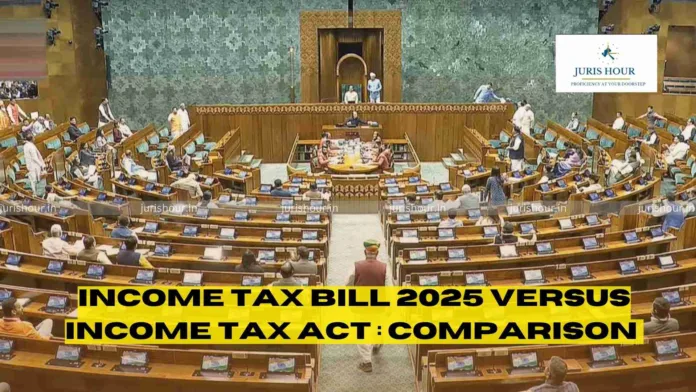Yeah, the irony is real! The idea of “simplification” often turns into more complexity, especially with tax laws. Instead of reducing the number of provisions, the new Income Tax Bill seems to have expanded them—probably to cover more scenarios, close loopholes, and provide detailed clarifications.
It’s a classic case of bureaucracy in action: every attempt to make things “easier” ends up making them even more convoluted! What’s your take on this—do you think the new bill will actually simplify compliance, or just add to the confusion?
Income Tax Bill 2025 Versus Income Tax Act : Comparison
Here’s a more detailed comparison between the Income Tax Bill, 2025 and the Income Tax Act, 1961:
| Feature | Income Tax Act, 1961 | Income Tax Bill, 2025 |
| Total Sections | 298 | 536 |
| Total Schedules | 14 | 16 |
| Total Pages | ~1,200+ (including amendments) | 622 |
| Chapters | 23 | 23 (same as before) |
| Terminology Change | Used ‘Previous Year’ and ‘Assessment Year’ | Replaced with ‘Tax Year’ for clarity |
| Use of Legal Jargon | Frequent use of notwithstanding, provisos, and explanations | Simplified language; notwithstanding replaced with irrespective |
| Fringe Benefit Tax (FBT) Provisions | Included (though abolished in 2009) | Completely removed |
| TDS Provisions | Scattered across multiple sections | Consolidated into a single section with structured tables |
| Presumptive Taxation | Spread across different sections | Brought together in a single section with tables |
| Salaries & Deductions | Detailed but complex provisions | Presented in simplified tables |
| Compliance Burden | Higher due to scattered provisions and legal jargon | Expected to be lower with structured and simplified language |
| Taxpayer’s Charter | Not explicitly included | Included to outline taxpayer rights & obligations |
| Litigation & Disputes | Frequent disputes due to ambiguities | Incorporates judicial pronouncements of last 60 years for clarity |
| Income Exemptions | Mentioned within the main Act | Moved to schedules for better readability |
| Tax Treatment of ESOPs | No clear standalone provision, leading to disputes | Clearly defined provisions to reduce litigation |
| Retrospective Amendments | Frequent amendments caused uncertainty | Aim is to reduce retrospective changes and ensure certainty |
| Complexity in Law | Increased over 60 years due to amendments | Intended to be more concise and lucid |
| Implementation Year | In force since 1962 | Expected from April 1, 2026 |
Read More: GST Registration Can’t Be Denied To Person Of Another State: Andhra Pradesh High Court





